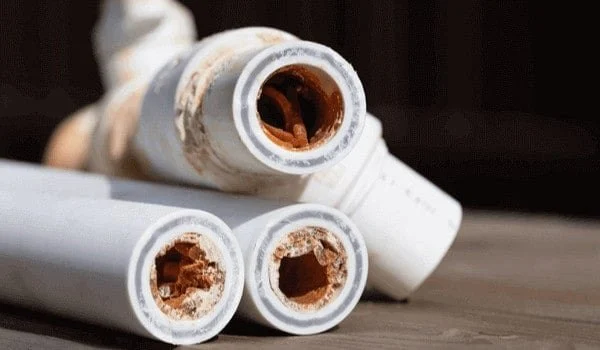
What Is Sediment Build-Up in Pipes?
Sediment build-up in household pipes is a common plumbing issue that can cause reduced water flow, clogs, and even damage to your plumbing system. Sediment typically consists of minerals, dirt, and debris that settle over time, especially in areas with hard water. These deposits can accumulate inside pipes, narrowing the passage and creating blockages. If left untreated, sediment build-up can lead to costly plumbing repairs and a decline in water quality. Understanding how sediment builds up and how to effectively clean it is crucial for maintaining your home’s plumbing system.
Common Symptoms of Sediment Build-Up
If you suspect sediment is building up in your pipes, there are several signs to look out for. Here are the most common symptoms:
1. Decreased Water Pressure
One of the first signs of sediment build-up in pipes is a noticeable decrease in water pressure. If your faucets or showerheads are delivering weak streams of water, it could be due to sediment obstructing the pipes and restricting water flow.
2. Discolored Water
Water that appears cloudy or has a brownish or yellow tint may indicate that sediment has loosened inside the pipes and is being flushed out. This is particularly common after using hot water, as it can stir up sediment that has settled in the water heater.
3. Clogged Drains
If you notice frequent drain blockages or a slow drainage rate in sinks or bathtubs, sediment build-up could be causing partial blockages in the pipes, making it harder for water to flow freely.
How Sediment Builds Up in Pipes
Sediment accumulation in pipes occurs naturally over time, especially in homes with hard water. Hard water contains high levels of calcium and magnesium, which can deposit in pipes and appliances like water heaters. The minerals collect on the walls of pipes, gradually narrowing the space through which water flows. As the build-up increases, it can lead to reduced water pressure, discolored water, and even complete blockages if left untreated.
How to Clean Sediment Build-Up in Household Pipes
Cleaning sediment build-up in pipes can be a straightforward task, depending on the severity of the accumulation. Here’s a step-by-step guide on how to clean your pipes and restore proper water flow:
1. Turn Off the Water Supply
Before attempting any cleaning, it’s essential to turn off the water supply to prevent flooding or additional complications. Locate the main water valve and shut it off. If you're cleaning specific pipes, you can also turn off the valves leading to those fixtures.
2. Flush the Pipes
If sediment build-up is minor, you can try flushing the pipes by opening all faucets in the house to allow water to flow through. Sometimes, running water through the pipes at high pressure can help dislodge and flush out loose sediment. It’s important to start with cold water and gradually use hot water if needed, as the heat can help loosen stubborn deposits.
3. Use a Pipe Cleaning Solution
If flushing doesn’t resolve the issue, consider using a pipe cleaning solution. There are commercial products designed specifically for removing sediment and mineral build-up from pipes. Alternatively, a mixture of vinegar and baking soda can act as a natural cleaning agent. Pour the solution into the affected pipes, let it sit for a while, and then flush with hot water. This can help dissolve the build-up and restore normal water flow.
4. Use a Plumbing Snake or Auger
For more stubborn sediment blockages, a plumbing snake or auger can be effective. These tools are designed to break through blockages in pipes and allow water to flow freely. Insert the snake or auger into the pipe and gently rotate it to break up the sediment. Once the blockage is cleared, flush the pipe with water to ensure the sediment is removed completely.
5. Call a Professional Plumber
If the sediment build-up is severe or if the above methods don’t work, it’s time to call a professional plumber. A plumber can use specialized equipment, such as hydro jetting, to remove heavy sediment accumulation and restore the pipes to optimal condition. Professional intervention may also be needed if the sediment has caused significant damage to the pipes or water heater.
Preventing Sediment Build-Up in Pipes
Preventing sediment build-up is easier and more cost-effective than dealing with the aftermath. Here are a few tips to keep your pipes free of sediment:
1. Install a Water Softener
If you have hard water, installing a water softener can significantly reduce the amount of calcium and magnesium entering your pipes. Soft water reduces mineral build-up and helps prevent sediment accumulation in your plumbing system.
2. Regularly Flush Your Water Heater
Over time, sediment can accumulate in your water heater, especially if you have hard water. To prevent this, it’s important to flush your water heater regularly. This will help remove any sediment that has settled at the bottom, ensuring the heater operates efficiently and extends its lifespan.
3. Schedule Regular Plumbing Maintenance
Regular plumbing inspections and maintenance can help identify and address sediment build-up before it becomes a major issue. A professional plumber can inspect your pipes, water heater, and filtration system, ensuring everything is in good working order and free from sediment buildup.
Get the Best Plumbing Products from Plumbers Supply Hub
If you’re looking to clean sediment build-up in your pipes or need plumbing tools and products, visit Plumbers Supply Hub for high-quality plumbing solutions. We offer a wide range of products, including water softeners, pipe cleaning solutions, and plumbing maintenance tools that can help you keep your pipes clean and functioning properly.


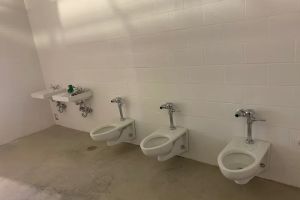
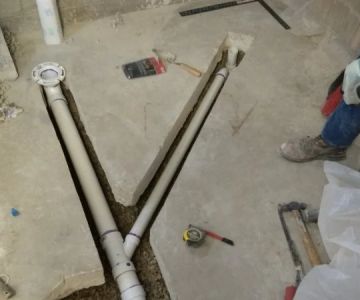





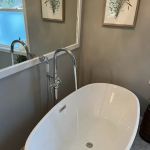 Oakland Plumbing LLC5.0 (17 reviews)
Oakland Plumbing LLC5.0 (17 reviews)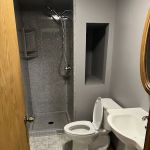 Midwest Plumbing & Service4.0 (7 reviews)
Midwest Plumbing & Service4.0 (7 reviews)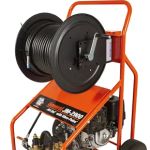 Moberly Plumbing4.0 (117 reviews)
Moberly Plumbing4.0 (117 reviews)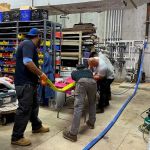 American Trenchless Technologies4.0 (8 reviews)
American Trenchless Technologies4.0 (8 reviews) Tony's Plumbing3.0 (12 reviews)
Tony's Plumbing3.0 (12 reviews)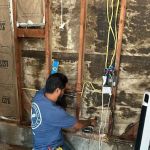 Socal Plumbing Co5.0 (5 reviews)
Socal Plumbing Co5.0 (5 reviews) How to Repair a Hairball Clog Without Harsh Chemicals
How to Repair a Hairball Clog Without Harsh Chemicals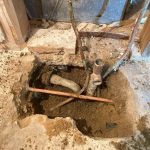 How to Repair a Junction That Is Leaking Under Slab: A Comprehensive Guide
How to Repair a Junction That Is Leaking Under Slab: A Comprehensive Guide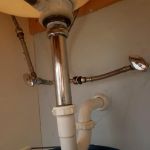 How to Replace a Sink Overflow Tube: A Complete Step-by-Step Guide
How to Replace a Sink Overflow Tube: A Complete Step-by-Step Guide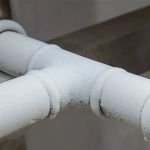 What Causes Frozen Pipes and How You Can Prevent It - Expert Tips
What Causes Frozen Pipes and How You Can Prevent It - Expert Tips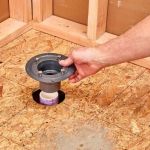 How to Replace a Shower Niche Drain: Step-by-Step Guide for Homeowners
How to Replace a Shower Niche Drain: Step-by-Step Guide for Homeowners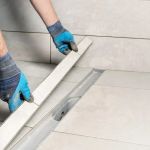 How to Replace an In-Wall Shower Drain: Step-by-Step Guide
How to Replace an In-Wall Shower Drain: Step-by-Step Guide